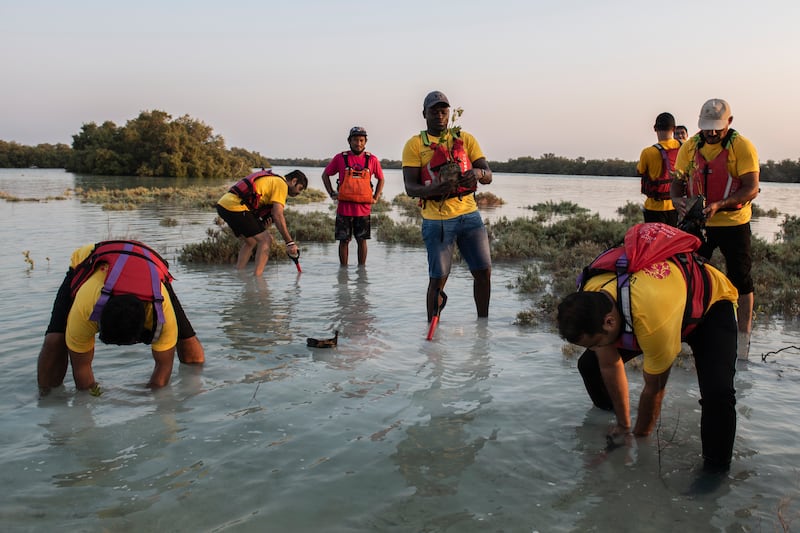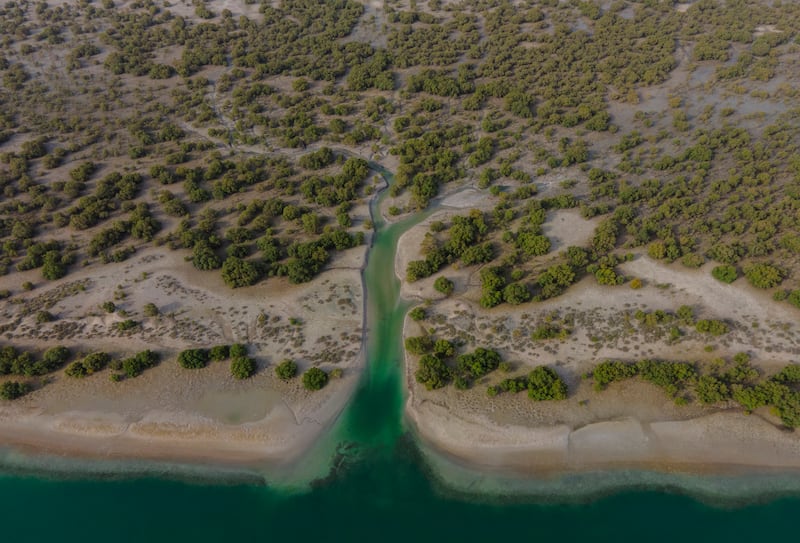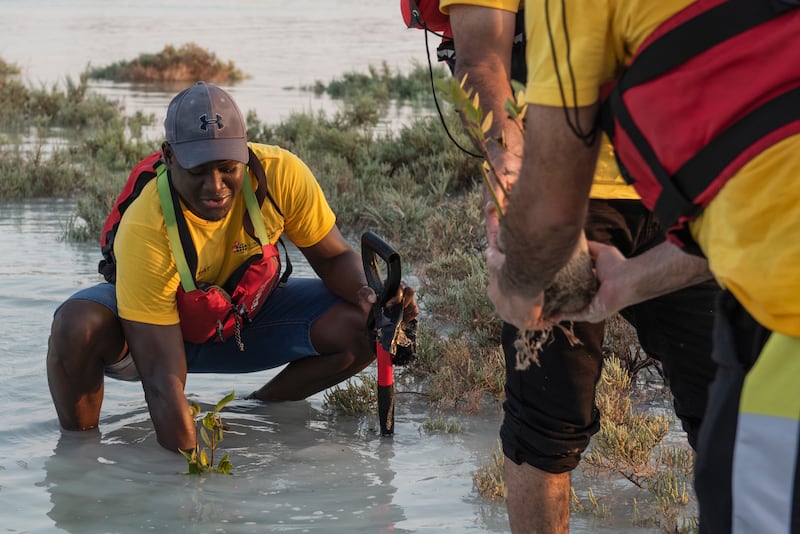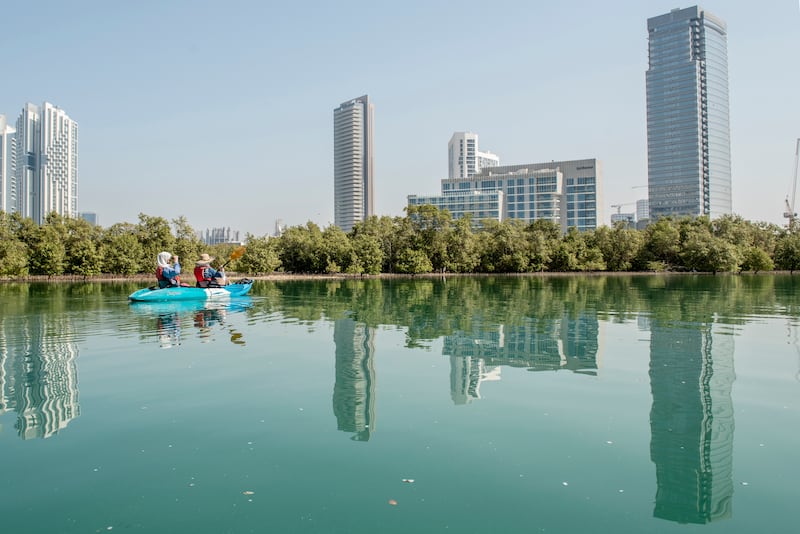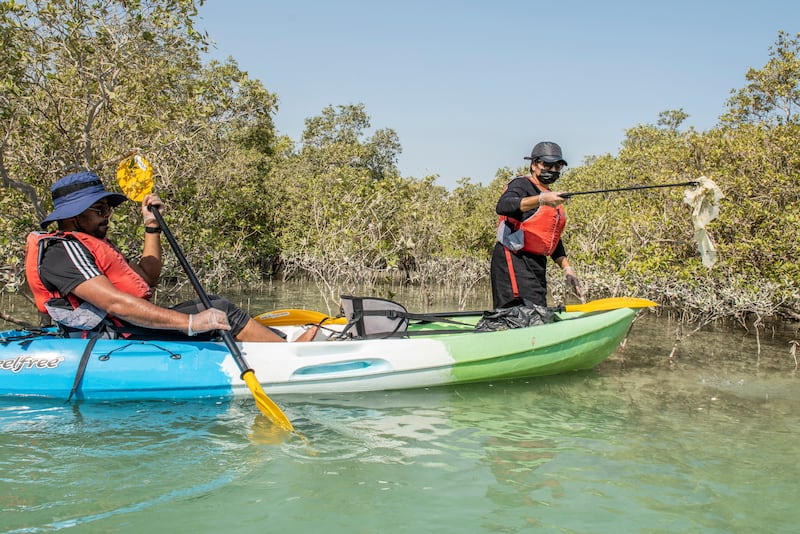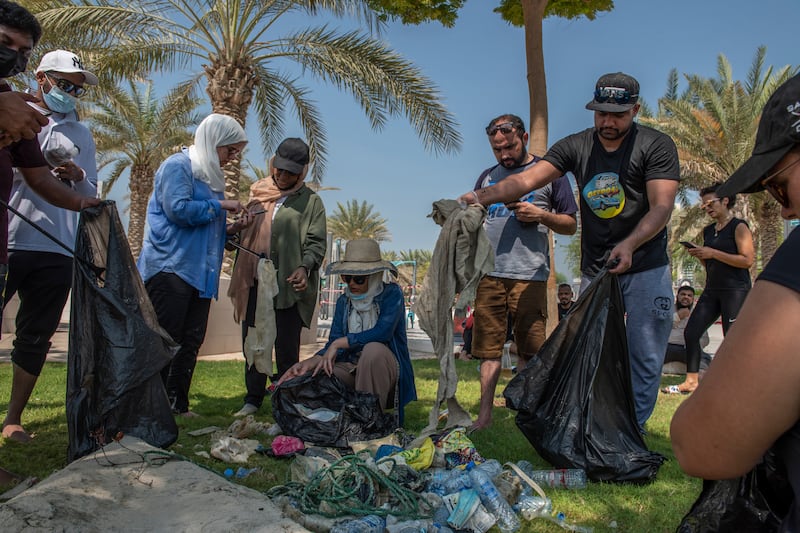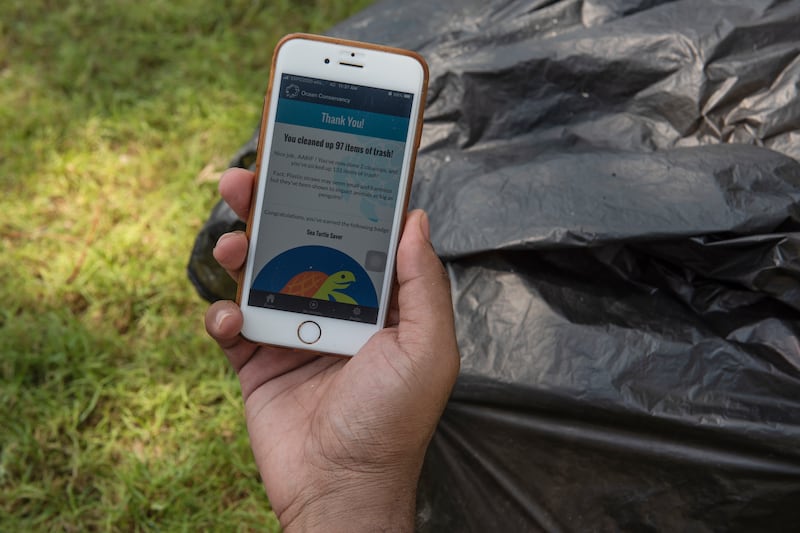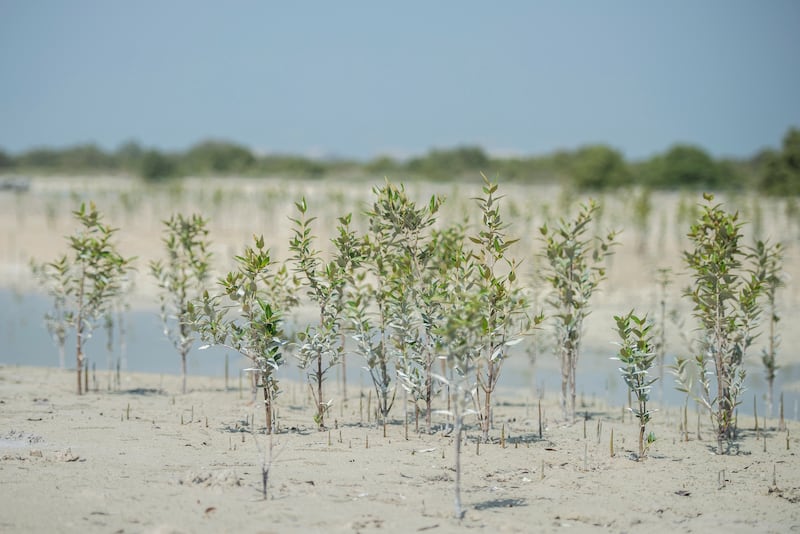Fresh from a visit from Prince William, Abu Dhabi’s mangroves have been given another boost, with the launch of the Etihad Mangrove Forest.
In partnership with the Environment Agency — Abu Dhabi, the mangrove forest has been established on Jubail Island in the UAE capital.
Following the launch of the Abu Dhabi Mangrove Initiative, a scheme that aims to conserve the trees to address the climate crisis and safeguard precious biodiversity, the Etihad Airways project will help to remove carbon from the atmosphere.
Adopt a mangrove in Abu Dhabi
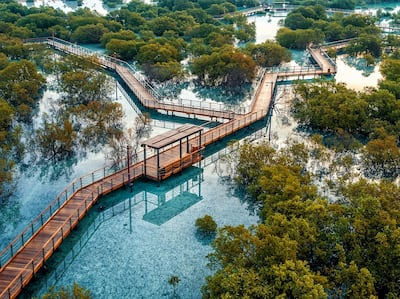
Travellers, businesses and individuals can adopt a mangrove in the Etihad Mangrove Forest as a way to help lower their carbon footprint.
Doing so costs Dh18.50 ($5) per tree, and people can track it online or using the dedicated app.
Adopters will receive a unique code that identifies their particular shrub as well as its geolocation within the UAE's only evergreen forest.
The adoption fees of each tree will be pooled into a common fund that will be used to plant new trees, collect seeds, operate a mangrove nursery and take care of the existing shrubs at the Jubail Island site.
At the moment, access to the Etihad Mangrove Forest is virtual only, but the airline has plans to develop the programme to allow adopters to visit the site and eventually plant their own mangrove seedlings.
Until then, travellers who purchase an adoption package will have to be content with virtual access, which will be granted for a 10-year period. Those who adopt the trees will also be able to name them.
During their decade of ownership, people can virtually drop in to the forest from anywhere in the world to see how their adopted avicennias are getting on, as well as to keep tabs on how much carbon dioxide their plant is absorbing.
That being said, the absorption process isn’t an overnight fix. Etihad says that one mangrove tree will remove the same amount of CO2 in its lifetime as is created in one seven-hour flight.
And while that's four times more than other tropical forests, it's still going to take a lot of mangroves to clean up the world's act.
'We need to actually remove carbon from the atmosphere'
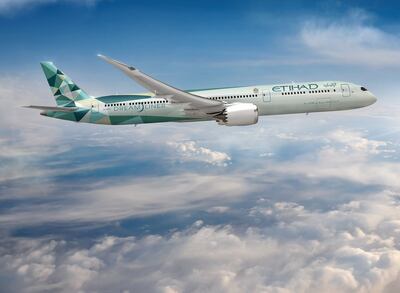
This is why the airline is not relying on its mangrove programme when it comes to reducing its carbon output.
Over the past two years, the airline has worked to tackle aviation decarbonisation using its Greenliner programme and focusing on technology and innovation for carbon-reducing processes.
“We know offsetting unavoidable emissions alone isn’t going to solve the climate crisis," said Tony Douglas, chief executive at Etihad Aviation Group. "We need to actually remove carbon from the atmosphere. Even with the best-case scenario global decarbonisation drive, we will still need to remove 6-10 GT of CO2 per year by 2050 to stay below 1.5°C global warming. The Etihad Mangrove Forest will contribute to this task.”
Etihad makes strong case for sustainable commercial flight
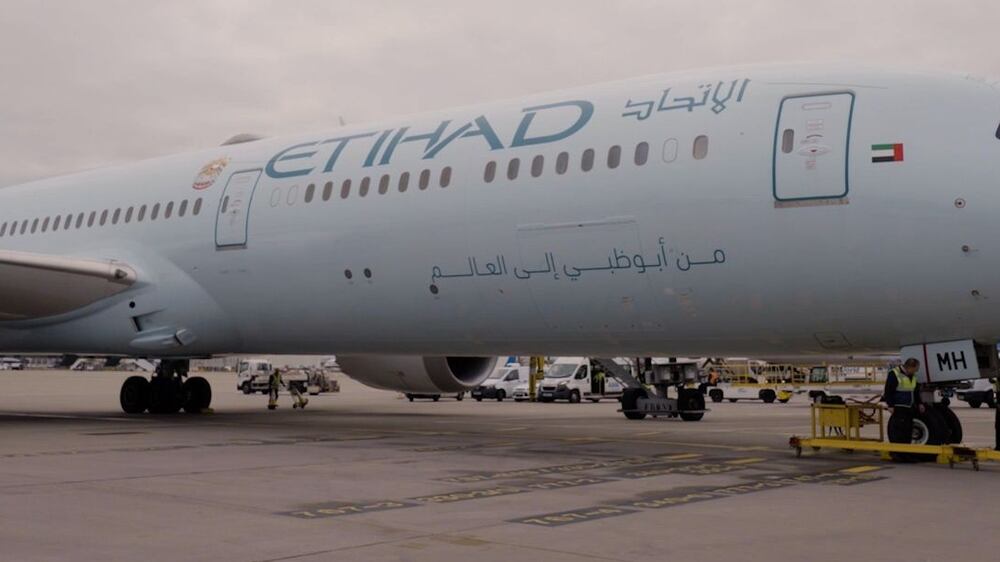
The airline also plans to create forests around the world, with one in every continent, and eventually in almost every country that it flies to.
Etihad has already been adopting mangroves for seats sold on its sustainable flights.
Operated as part of the Etihad Greenliner Programme, these flights use optimised routes, avoid contrails, operate via more efficient engines, employ noise-reduction technology and make use of sustainable aviation fuels in an effort to help propel aviation decarbonisation.
Travellers flying on these eco-flights are given a mangrove at Abu Dhabi’s Jubail Mangrove Park, purchased for them by Etihad in an effort to ensure that the Greenliner flights remain carbon neutral.


